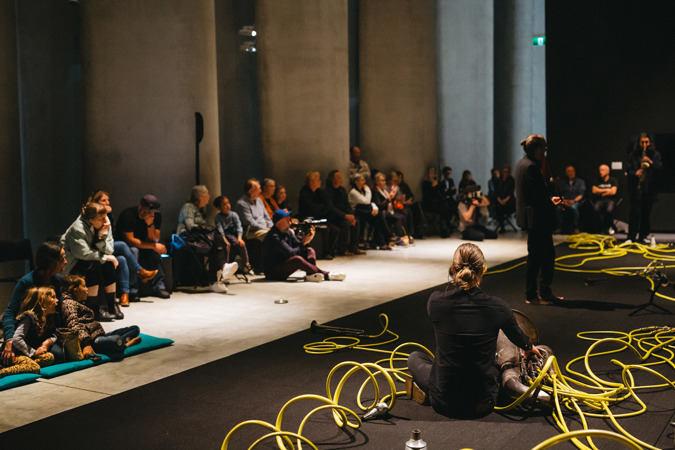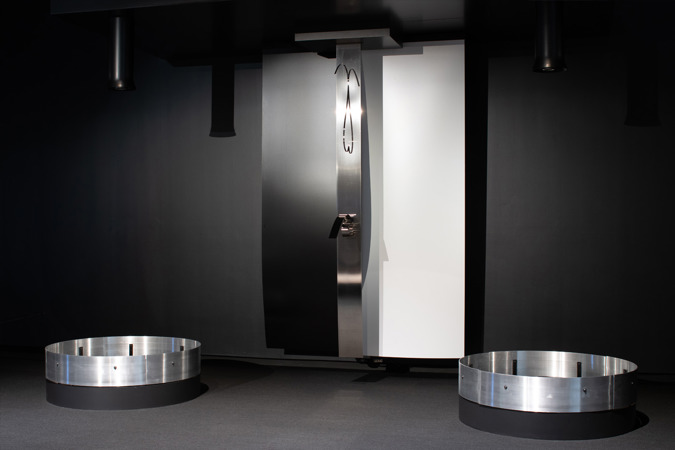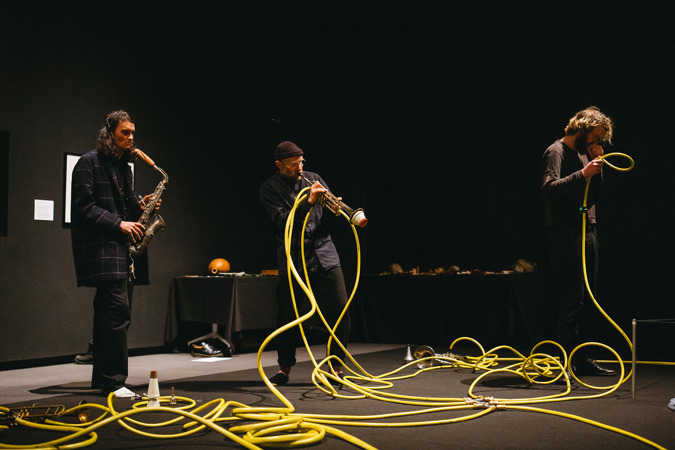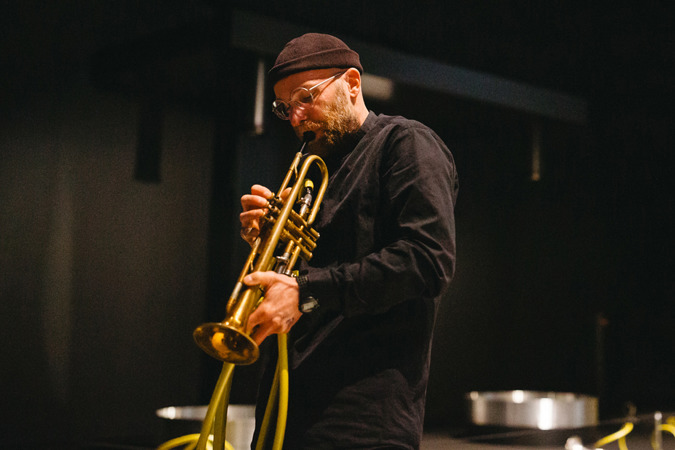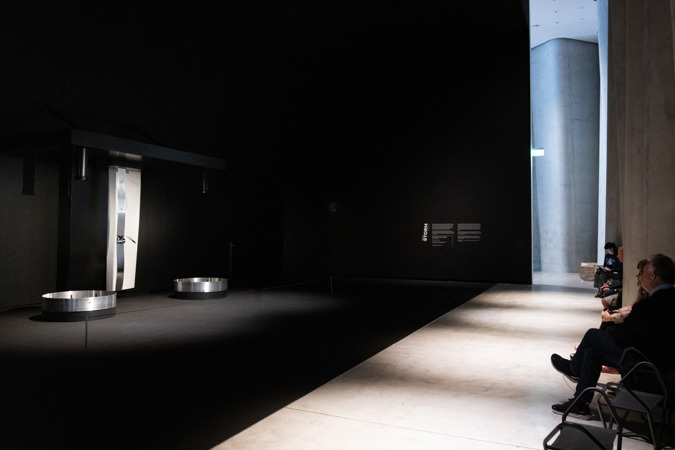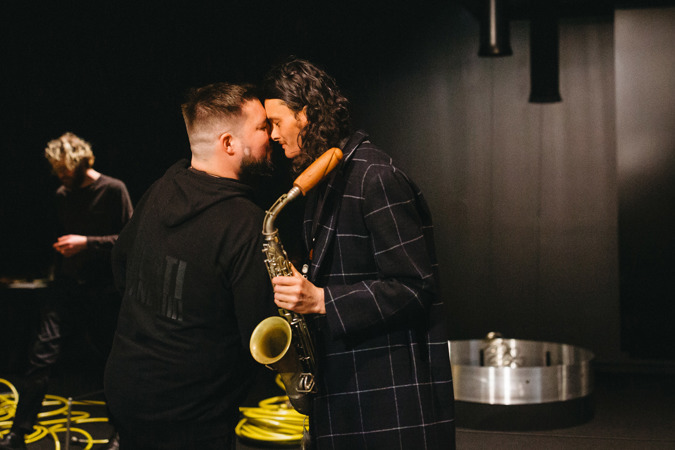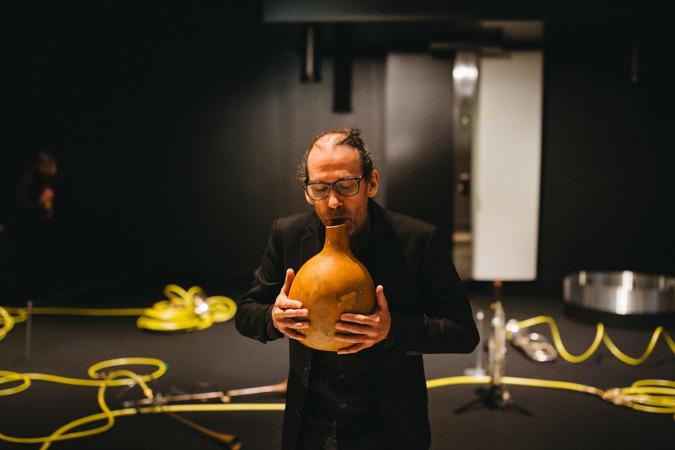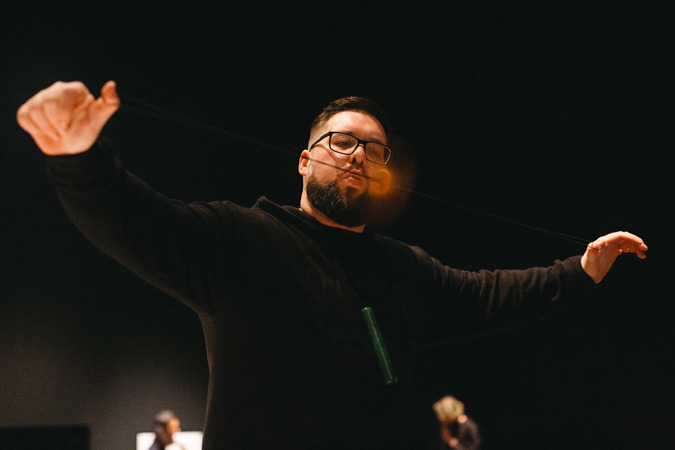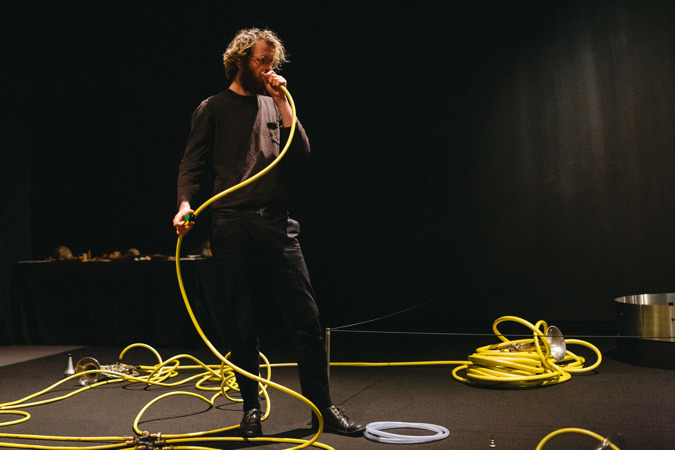A long held breath: Susan Ballard responds to Len Lye Storm and Noel Meek Weather Assemblage
Len Lye's 1969 kinetic sculpture Storm was recently reconstructed by the Len Lye Foundation. Alongside the work's return, musician and composer Noel Meek assembled a cast of sound artists to deliver Weather Assemblage in conversation with Len's work.
Susan Ballard (Pākehā), Associate Professor of art history at Te Herenga Waka Victoria University of Wellington, responds to this event.
Hau. The beginning.
Hauora. Health, spirit. To tell if someone is alive, lean in close and feel their breath on the back of your hand.
The weather here is never silent or still, it gathers around Taranaki Mounga, travelling with a faint breeze carried on history’s breath. Sometimes there is enough energy to form a storm. Wind plus pressure and velocity.
The World Meteorological Organisation maintains a rotating list of names for storms. Once a collective of winds reach 34 knots, names are served out alphabetically, gender-diverse and yet specific. Once named, the winds crash together, gathering momentum, ripping, knotting and finally releasing energy. A felt event. If assessed as too destructive the storm’s name is removed from the WMO list, remaining only in memory. The next storm begins to form and the alphabet moves on.
Len Lye exhibited Storm King and Thundersheet together as Storm only once, fifty-three years ago in Kinesthetics, a group show at the Howard Wise Gallery in New York (6 December 1969 - 10 January 1970), together with six other works — Juan Downey Against Shadows, John Freeman Light Wall, Carson Jeffries Kinetic System 7, Newton Harrison Plasma Chamber and Wall, and John Roy Sun Dance. The catalogue explains :
Len Lye Storm
The Storm King and Thundersheet slowly start to move in violent patterns. One subsides, the other reaches a new peak; they vie with each other to reach greater heights. As the tension seems to reach the breaking point, the energy is suddenly withdrawn and the metals regain their tranquility. The storm is over.
Fifty-three years is a long time to hold your breath. Len Lye’s plans for Storm extended beyond what was shown in New York into more granite, more steel, more lightning, more tension, more energy: a Storm Chamber. Lye’s image of a storm chamber of 40 pieces is captured in a small drawing shown alongside a video documenting the making of this Storm, now formed of three parts: Storm King, Thundersheet and Lightning Bolts. The Lightning Bolts are new, the final resolution of an engineering challenge that pitted contained energy against gravity.
In Weather Assemblage composer Noel Meek taps into the deep ecology of Lye’s Storm. To collaborate with Storm, Meek is joined by Eamon Edmundson-Wells and Sean Martin-Buss on a multibreath modular aerophone formed from a conjoined collective of brass instruments: four trumpets, two tuba, two tenor horns, two straight bugles, a Wagner tuba, valve trombone, trombone, mellophone, baritone horn, tenor horn, and cornet are all connected by metres and metres of hosing. Breathless. Surrounding them moves an ever-changing selection of taonga pūoro played by Rob Thorne (Ngāti Tumutumu), Jake Kīanō Skinner (Ngāti Rangitihi, Tūhoe) and Larsen Winiata Tito-Taylor (Ngā Puhi, Ngāti Whātua, Tainui). Together all six performers create shapes and volumes, opening portals. Mouthpieces attach and detach. The coordinates change, but the breath returns; a clenched atmosphere waiting to be freed from the pipes.
Meek’s composition is about alliances. The performers send messages across the gathering winds. They listen carefully for guidance from Tāwhirimātea, before assembling into a new geology. Their bodies, careful and controlled, are mediated by the instruments. Inside the modular aerophone the breath of one performer is held and then released by another. The air within the gallery is solid and then sharply cut as two pieces of greywacke tap into the ripe spaces filled with the solemn whistle of pūrorohū, the felt hum of pūrerehua, and the ever-present rumble of tētere.
Weather Assemblage is about being together with the storm. It is not a random collection of parts, but offers a glimpse of a more-than-human world where particles and elements drawn from the planet gather together with a sense of purpose and potential. Lye sought this understanding of collaboration with the planet. In this Storm the steel springs of Lightning Bolt hover suspended, waiting, a swelling anticipation. And then the sky falls. The final drop is a surprisingly dry crack absorbed within two steel cauldrons lined with concrete and granite. The springs bounce and sound is absorbed back into time and space.
When Storm was first shown in New York it was alongside two of Californian artist Newton Harrison’s ecological works. The connection is not surprising. Harrison was already concerned with using techniques to reflect ecological systems and planetary environments. His Plasma Chamber is reported to have contained luminous gas in a vacuum chamber: an aurora borealis, and Wall was a heat-sensitive and interactive colour-changing surface. Performers could walk along the wall, composing motion (as Lye would say). Despite their very different approaches Lye and Harrison both made models of planetary energies and atmospheres. It wouldn’t take long before both artists turned to the scale of the body within the universe.
In this Storm there is no softness like in some of Lye’s other works, here everything is hard, sharp. Meek reminds us that the connections can be abrasive. The online Maori Dictionary - Te Aka brings together these false friends:
tētere 1. (noun) bugle, flax trumpet…
2. (noun) thunder.
Both heard at a distance, neither to be ignored when up close.
Here in Taranaki, storms can never be ignored.
In his history of brass and pipe bands in Te Ara - the Encyclopedia of New Zealand, Peter Clayworth writes that “In 1859 the Taranaki Volunteer Rifle Company raised funds to purchase instruments for a band, beginning a trend among Volunteer Force units.” On the 17 March 1860 at Te Kohia pā at Waitara the opening shots of the first Taranaki War were fired by Crown soldiers against Te Ātiawa. It might be too much to assume that the sound of the instruments came before the sound of the rifles.
When Pākehā scholar Eldson Best wrote about the concept of hau in his Maori Religion and Mythology Part 2 (c.1924), he noted:
"It would be a decided error to describe the hau as a spirit, for that would be to give a wrong impression, and the reader would confuse it with the wairua. The hau is a quality intangible and always invisible, even to gifted seers, an aural quality."
Best is remembered for his ethnographic work with Tūhoe in the Urewera and his important role in the Polynesian Society and Dominion Museum in the early twentieth century. Before then, in the late 1870s Best was a member of the Constabulary Field Force in Taranaki, he was based at Pungarehu, and participated in forced survey and land acquisition, and attacks on kainga including the invasion of Parihaka in November 1881. The inconsistency is wrapped around Taranaki Maunga, where the green cloak stops 9.6 kilometres from the summit and meets a circle of colonial farmland. Unsettling.
Meek is attuned to all these histories and the aural quality of hau. Weather Assemblage is an energetic transformation working to reconnect Storm to the colonial and atmospheric layers of the environment in Taranaki. The resonance continues out of the room, beyond the confines of performance. Here, the explosive Maunga contains enough energy to resist gravity, and it will not be long (scientists studying the volcano suggest maybe 100, maybe 1000, maybe 10,000 years) before it lets its breath out and earth and sky are back together again.
